Gamete Intrafallopian Transfer: A Deep Dive into Fertility
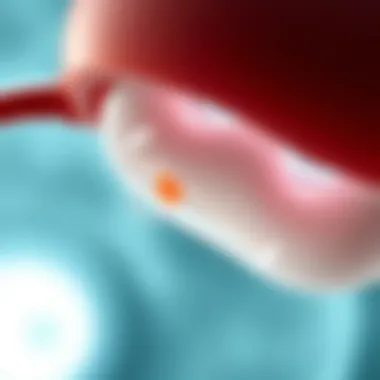
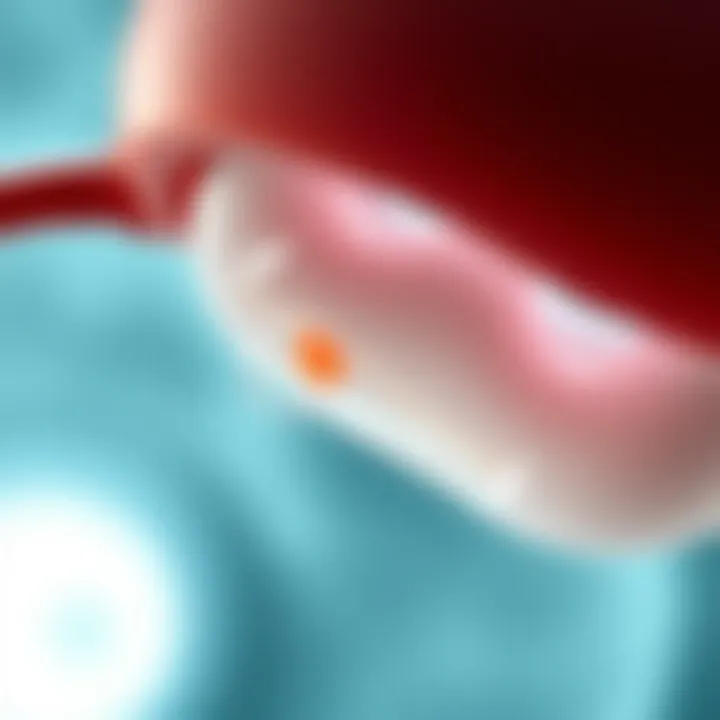
Intro
Gamete Intrafallopian Transfer, or GIFT for short, stands as a fascinating alternative to more conventional fertility treatments like in vitro fertilization (IVF). With the world of reproductive medicine evolving at an astounding pace, GIFT offers a unique approach that places emphasis on natural fertilization by placing both eggs and sperm directly into the fallopian tubes. This article aims to peel back the layers of complexity surrounding this technique, providing an in-depth look that’s accessible not just to medical professionals but also to students and researchers looking to grasp this nuanced area of reproductive science.
The relevance of GIFT in the broader context of assisted reproductive technologies is indispensable. As many couples struggle with infertility, understanding the full array of available options becomes crucial. GIFT represents a bridge between conventional methods and the body’s natural capabilities, potentially enhancing the chances of conception for specific patient profiles. This article will highlight the key points of GIFT, delve into its scientific foundations, and weigh its benefits against the risks involved. It will also provide insights into how GIFT holds a place in the ever-evolving landscape of fertility treatments.
Methodology
Study Design
To appropriately dissect the intricate details of GIFT, a thorough examination of current literature, clinical studies, and patient outcomes has been undertaken. The selection of studies was based on rigorous criteria, prioritizing peer-reviewed journals and articles that detailed both successful and unsuccessful cases of GIFT. This approach allows a nuanced understanding of the procedure, its advancements, and the patient experience.
Data Collection Techniques
Data collection for this article involved a multi-pronged strategy:
- Literature Review: We combed through numerous academic journals, including resources from sites such as PubMed and JAMA.
- Patient Surveys: Insights were drawn from aggregated surveys targeting individuals who have undergone GIFT and similar treatments, offering firsthand accounts of their experiences.
- Interviews with Experts: Conversations with fertility specialists helped to paint a clearer picture of the present landscape regarding GIFT.
By synthesizing these various data sources, we aim to provide a comprehensive guide that is both informative and enlightening.
Discussion
Interpretation of Results
The findings suggest that GIFT can significantly increase the likelihood of conception in certain scenarios, especially in cases where there are issues with the fallopian tubes or unexplained infertility. However, it’s vital for patients to understand that results are not guaranteed, as success rates can vary widely depending on individual circumstances.
Limitations of the Study
While this article aims to provide a thorough understanding of GIFT, some limitations must be acknowledged. First, the variability in patient factors means that broad conclusions can be trickier to make. Additionally, the smaller sample sizes in some studies compared to larger trials of IVF can affect reliability.
Future Research Directions
Looking ahead, further research is essential to refine GIFT processes and enhance success rates. Topics for future exploration might include:
- Long-term health outcomes for mothers and babies born through GIFT
- Comparative efficacy with other assisted reproductive technologies
- The role of personalized medicine and genetic screening in optimizing GIFT outcomes
As the dialogue surrounding fertility treatments continues to evolve, GIFT will likely maintain an important position, offering hopeful options to those navigating the complex pathways of conception.
Prelude to Gamete Intrafallopian Transfer
The realm of fertility treatments is often fraught with uncertainty and complexity. Among the plethora of available options, Gamete Intrafallopian Transfer (GIFT) stands out as a distinctive approach aimed at couples facing challenges in conceiving. Not only does GIFT facilitate the natural environment for fertilization, but it also leverages advancements in reproductive technologies to enhance the chances of successful pregnancy.
Understanding Gamete Intrafallopian Transfer necessitates diving deep into its definition, historical significance, and the scientific principles that underpin its application. The technique itself involves the direct placement of eggs and sperm into the fallopian tubes, simulating the conditions that occur naturally within a woman's body. It bypasses much of the laboratory-based procedures common in other assisted reproductive technologies. This aspect alone piques the interest of many in the medical field, considering the potential benefits it offers over traditional methods.
Definition and Overview
GIFT is defined as a fertility treatment that involves the surgical placement of both mature eggs and sperm directly into the woman's fallopian tubes. This method allows fertilization to occur within the body itself, as opposed to in vitro fertilization (IVF), where fertilization happens externally in a lab setting. The fundamental idea is to enhance the chances of conception by providing a more natural environment for gametes to meet and interact.
One of the main appeals of GIFT lies in its mimicking of natural fertilization processes. As gametes are introduced directly into the fallopian tubes, the body’s own hormonal and physical conditions can contribute to successful fertilization. Thus, GIFT is particularly beneficial for women who have a history of pelvic issues or blockages in their fallopian tubes, presenting a fruitful alternative for them.
Historical Background
The concept of GIFT is not new; it emerged in the late 1980s as a response to the growing demand for more natural-assisted reproductive techniques. Researchers and physicians became increasingly interested in methods that retained as much of the natural reproductive process as possible, while still addressing infertility challenges.
In 1984, the first successful GIFT procedure was reported, showcasing how a blend of technology and maternal physiology could bring together eggs and sperm in a way that closely replicated conception. Over time, with improvements in both surgical techniques and understanding of human reproductive biology, GIFT became a more refined option within the broad spectrum of fertility treatments. The advancement in laparoscopic tools allowed such delicate procedures to be conducted with greater precision and fewer risks, which further elevated GIFT as a viable choice for many couples.
The history of GIFT highlights not only the evolution of medical technology but also the shifting attitudes toward fertility treatments—places where science meets deeply personal decisions. As GIFT continues to adapt and evolve, understanding its past is crucial in appreciating its potential benefits in contemporary reproductive health.
Gamete Intrafallopian Transfer resurrects the age-old desire to conceive naturally, bridging scientific innovation with the fundamental processes of life.
The Science behind GIFT
The realm of fertility treatments has significantly evolved over the years, with various techniques emerging to assist those seeking to conceive. Among these, Gamete Intrafallopian Transfer (GIFT) stands out due to its unique approach. Rather than relying on external fertilization methods, GIFT places eggs and sperm directly into the fallopian tubes, closely mimicking the body's natural fertilization process. This section aims to elucidate the scientific foundation of GIFT, examining how human anatomy and biological mechanisms interact to facilitate successful conception.
Human Reproductive Anatomy
Understanding human reproductive anatomy is crucial for grasping the underlying principles of GIFT. The female reproductive system primarily consists of ovaries, fallopian tubes, the uterus, and the cervix.
- Ovaries: These almond-shaped organs produce eggs and secrete hormones like estrogen and progesterone.
- Fallopian Tubes: Often referred to as the pathways for eggs, these tubes connect the ovaries to the uterus and are pivotal in fertilization as they host the meeting place for sperm and egg.
- Uterus: Once fertilization occurs, the fertilized egg travels to the uterus where it can implant and grow.
- Cervix: This canal allows passage into the uterus and plays a role during pregnancy and childbirth.
GIFT utilizes the fallopian tubes strategically. By introducing gametes—eggs and sperm—directly into the tubes, GIFT optimizes the chances of sperm reaching the egg. This method sidesteps issues related to sperm quality or motility, which can sometimes hinder in vitro fertilization (IVF) procedures. In essence, GIFT creates a conducive environment for fertilization much like nature intended, making it a distinct choice within assisted reproductive technologies.
Biological Mechanics of Fertilization
Fertilization is a complex process that relies on precise timing and environmental conditions. The biological mechanisms that occur during fertilization offer numerous insights into the efficacy of GIFT. Key elements include:
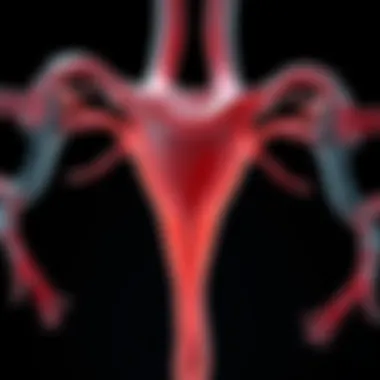

- Ovulation: Normally, an egg is released from the ovary during a woman’s menstrual cycle, entering the fallopian tube where it awaits fertilization.
- Sperm Transport: Following sexual intercourse, sperm must navigate through the cervix, into the uterus, and finally reach the fallopian tubes. This journey is influenced by factors such as cervical mucus consistency.
- Fertilization Process: Once sperm locate the egg, it is a race against time. Only one sperm can penetrate the egg’s outer layer; this triggers biochemical changes that prevent additional sperm from entering, thus ensuring a single embryo forms.
GIFT amplifies the likelihood of successful fertilization by maintaining the natural sequence of events while enhancing proximity between sperm and eggs. This direct transfer of gametes eliminates the risks associated with sperm transport challenges that might occur during IVF.
"The fascination with GIFT lies not just in its methodology but in how it encapsulates the beauty of human biology—working in harmony with our nature rather than against it."
To understand the success rates associated with GIFT, research indicates varied outcomes when compared to IVF, largely influenced by age, underlying fertility issues, and overall health. Statistically, GIFT has shown favorable success rates especially for couples facing specific infertility challenges, such as those related to cervical factors.
In summary, the science behind GIFT resides in its ability to leverage human anatomy and the inherent biological mechanisms of conception. By placing gametes directly where they need to be, GIFT not only enhances the possibility of fertilization but also translates scientific knowledge into tangible reproductive solutions.
GIFT Procedure: Step-by-Step
Understanding the GIFT procedure is crucial for anyone interested in the realm of fertility treatments. This intricate process not only increases the likelihood of conception but also showcases the advancements in reproductive technology. GIFT, or Gamete Intrafallopian Transfer, emphasizes the natural approach to fertilization, directly targeting the fallopian tubes where traditional conception occurs. By dissecting the GIFT procedure step-by-step, we can appreciate the methodical nature that enhances its effectiveness while ensuring patient safety and comfort.
Pre-Treatment Assessment
Before diving into the actual GIFT procedure, a meticulous pre-treatment assessment is essential. This stage serves as the groundwork for a successful treatment plan, helping health professionals tailor their approach to the individual needs of patients.
During this assessment, physicians will evaluate a range of factors:
- Medical History: A thorough review of the patient's medical past helps disclose any underlying conditions that could complicate the procedure.
- Fertility Tests: These typically assess hormone levels, ovulatory function, and any abnormalities in reproductive anatomy—such as problems with the fallopian tubes or uterus.
- Sperm Analysis: An examination of the male partner’s sperm can provide insights into motility, morphology, and overall vitality, aspects vital for effective fertilization.
This assessment process is like laying the foundation for a house. Skipping or skimping on this step can lead to structural flaws further down the line, possibly compromising the entire fertility journey.
Collection of Gametes
Once the pre-treatment evaluations are complete and a personalized plan has been devised, the next step is the collection of gametes. This step is pivotal to the success of the GIFT procedure, as it directly involves gathering eggs and sperm at their peak viability.
The egg retrieval is typically conducted through a minor surgical procedure known as transvaginal ultrasound aspiration. Utilizing an ultrasound-guided needle, the physician retrieves eggs directly from the ovarian follicles. Factors like timing are crucial here, as egg maturity is essential for fertilization.
In parallel, sperm collection occurs, which usually involves a simple semen sample from the male partner. This is where quality meets quantity; ensuring that a sufficient volume of high-motility sperm is available for the next phase of the procedure.
The synchronization of these steps is like orchestrating a delicate dance, ensuring that both genetic materials are ready and primed for the subsequent action.
Administration of GIFT
The final stage in the GIFT procedure is the administration of GIFT itself. This is where the magic happens—combining the gametes and facilitating a chemical union within the fallopian tubes. The gametes are placed into the fallopian tubes using a thin catheter. This closely mirrors the natural process of fertilization, as it occurs inside the body rather than in a lab.
The catheter is carefully navigated through the cervix and into the uterus, and then into the fallopian tubes. The skilled hands of the physician ensure that the delicate process is executed with precision, minimizing any discomfort for the patient.
What sets GIFT apart is its requirement for timing. The procedure takes place right after ovulation, ensuring that the eggs are at their most viable. A successful administration means that fertilization can occur almost instantaneously in a natural environment, which many believe enhances the chances of a successful pregnancy.
Clinical Applications of GIFT
Gamete Intrafallopian Transfer, or GIFT, presents a notable approach in the field of assisted reproduction. It effectively bridges the gap between in vitro fertilization and natural conception, making it a significant option for couples facing fertility challenges. The ability to transfer gametes directly into the fallopian tubes reflects a physiological method that promotes natural fertilization processes. This section elaborates on the clinical applications of GIFT, including eligibility criteria and specific indications for its use, thereby establishing its relevance in contemporary reproductive science.
Eligibility Criteria for Patients
Before considering GIFT, potential candidates must meet specific eligibility criteria. The foremost aspect of this evaluation revolves around the female partner's reproductive health. Below are some crucial factors helpful for assessing eligibility:
- Age of the Patient: Generally, women under 40 are considered for GIFT due to declining egg quality and quantity as age advances.
- Ovarian Reserve: A thorough assessment of the ovarian reserve through hormonal testing (like AMH levels) and ultrasound scans provides insight into the woman's reproductive potential.
- Fallopian Tube Condition: An intact and functional fallopian tube is mandatory for GIFT since the gametes need to be released into them. Tubal patency tests, often conducted via Hysterosalpingography (HSG), are essential in determining this.
- Partner’s Semen Quality: Since GIFT relies on the cooperation of both gametes, the male partner's sperm must be of good quality. Seminal analysis will outline the sperm count, motility, and morphology.
- Medical History: Previous reproductive history, gynecological conditions (like endometriosis or uterine fibroids), and other health concerns can influence eligibility.
In summary, GIFT is not a one-size-fits-all solution; it requires careful screening to tailor the procedure to the individual's circumstances.
Indications for GIFT
Identifying the right indications for GIFT is essential in maximizing its success rate and ensuring the best possible outcomes for individuals and couples. Here are key reasons why GIFT might be advised:
- Blocked or Damaged Fallopian Tubes: If other assisted reproductive techniques have failed and the fallopian tube is functional, GIFT can be a suitable alternative.
- Unexplained Infertility: Couples experiencing infertility without a clear medical cause may find GIFT a beneficial approach, especially when less invasive options have not yielded results.
- Sperm Issues: In cases where sperm quality is low, having the sperm placed directly in the fallopian tubes may increase the likelihood of successful fertilization.
- Female Fertility Issues: Women with certain reproductive conditions, such as polycystic ovary syndrome or ovulatory disorders, may benefit from GIFT.
- Educated Choices: Some couples may choose GIFT based on philosophical or logistical reasons, preferring a method that maintains a level of natural occurrence in conception.
The decision to undergo GIFT must be made through collaboration between patients and their reproductive health professionals, considering all available data and potential implications.
Comparative Analysis with IVF
In the sphere of assisted reproductive technologies, a comparative analysis between Gamete Intrafallopian Transfer (GIFT) and In Vitro Fertilization (IVF) is paramount. Understanding the nuances of these two procedures can help patients, clinicians, and researchers navigate the complex landscape of fertility treatment options. While both approaches aim to enhance the likelihood of conception, they each offer distinct methodologies, benefits, and considerations.
Overview of In Vitro Fertilization
In Vitro Fertilization has become synonymous with modern fertility treatment. This process involves several steps where eggs are harvested, fertilized with sperm in a controlled laboratory environment, and then transferred back into the uterus. Unlike GIFT, where the fertilization occurs within the fallopian tubes, IVF relies heavily on laboratory conditions to ensure the successful combination of sperm and egg. Here’s a breakdown of the steps involved in IVF:
- Ovarian Stimulation: Fertility medications stimulate the ovaries to produce multiple eggs.
- Egg Retrieval: A minor surgical procedure collects the eggs.
- Fertilization: Eggs are combined with sperm in vitro.
- Embryo Culture: The resulting embryos are nurtured in the lab for several days.
- Embryo Transfer: The healthiest embryos are selected and placed into the uterus.
One of the critical components of IVF is the ability to select viable embryos, often using preimplantation genetic testing. This option appeals to many couples concerned about genetic disorders.
Success Rates: GIFT vs. IVF
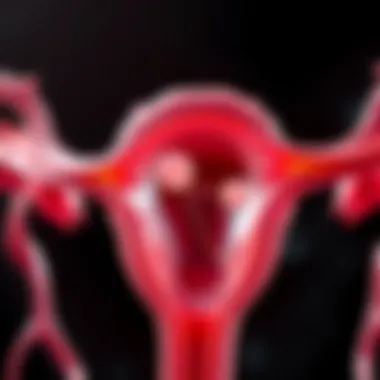
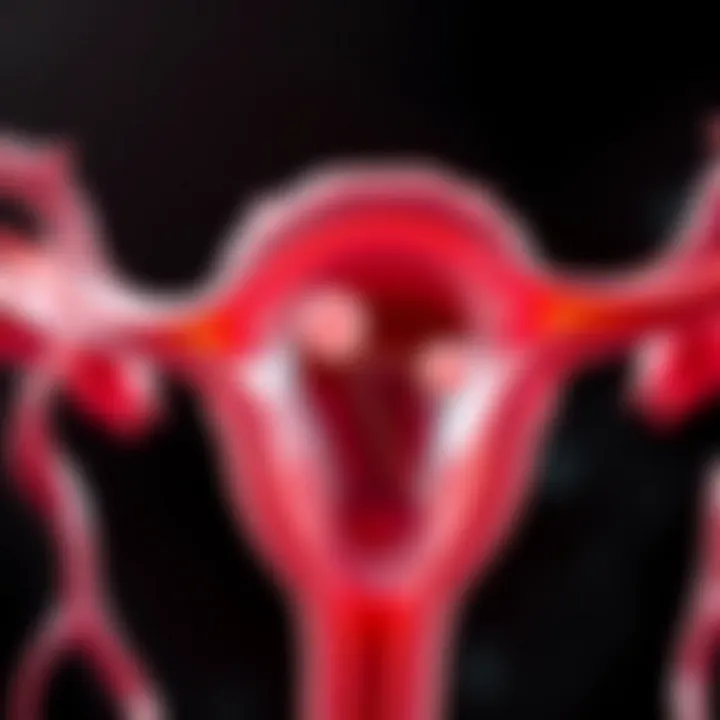
When evaluating the success rates of GIFT and IVF, studies show varied outcomes, depending on individual circumstances. Success in both techniques is influenced by numerous factors including age, reproductive health, and underlying fertility issues.
Generally speaking, IVF has been touted for higher success rates, often due to advancements in embryo selection processes. However, GIFT retains its uniqueness by allowing fertilization to take place in a more natural environment, potentially appealing to couples seeking less interventionist methods. It’s crucial to note that:
- IVF success rates: Range typically between 30% to 50%, depending on age and health factors.
- GIFT success rates: Generally lower, often averaging around 20% to 30%. However, for certain patients, GIFT may result in higher success due to its more natural approach.
Success rates may vary, and discussions with fertility specialists are essential to tailor the best approach for patients.
Patient Considerations
Patients considering either GIFT or IVF must weigh several factors before making a decision.
Some key considerations include:
- Personal Health History: Understanding the underlying causes of infertility can steer treatment choices. For instance, women with damaged fallopian tubes might benefit from IVF due to the closed nature of the procedure.
- Emotional Readiness: Fertility treatments can be emotionally taxing. Patients should assess their emotional and psychological preparedness for either approach.
- Financial Implications: Both GIFT and IVF can be costly, with IVF often being more expensive. Patients should consider their insurance coverage and other financial logistics.
- Time Frame: Patients who wish to conceive quickly may favor IVF due to its relatively faster timelines compared to GIFT.
To round out the analysis, engaging with healthcare professionals and gathering experiences from peers can provide invaluable insights into the practicalities of both procedures.
For more information on fertility treatments, check out resources such as Americanpregnancy.org and Resolve.org.
Potential Risks and Complications
When considering Gamete Intrafallopian Transfer (GIFT), understanding the potential risks and complications is crucial. While this technique can provide hope for couples facing infertility, it’s important to weigh the benefits against possible adverse outcomes. GIFT, akin to any medical procedure, is not without risks that can range from surgical to psychological implications. This section will delve into the specific elements of surgical risks and success and failure rates, providing a comprehensive overview to facilitate informed decision-making.
Surgical Risks Involved
Surgical risks in the context of GIFT stem primarily from the invasive nature of the procedure. Some risks include:
- Infection: As with any surgery, there’s a potential for infection at the incision site or within the reproductive tract. Proper sterilization and antibiotic prophylaxis can mitigate this risk.
- Damage to Surrounding Organs: In rare instances, the instruments utilized during the procedure may inadvertently affect adjacent organs, such as the bladder or intestines.
- Ectopic Pregnancy: This is a situation where fertilization occurs in the fallopian tube rather than the uterus, leading to complications needing urgent medical attention.
- Blood Clots: The surgical procedure might elevate the risks of thrombosis, necessitating careful monitoring post-operation.
These risks underscore the need for a thorough pre-surgical assessment. Patients should discuss openly with their fertility specialists about any health concerns and any medications that could increase complications.
Success and Failure Rates
The success rates of GIFT are a fundamental concern for prospective parents. Though the procedure does offer a more natural fertilization process, its effectiveness can vary based on multiple factors, including age and underlying fertility issues. Here are some salient points about success and failure rates:
- Success Rates: In ideal conditions, GIFT can present favorable success rates—research indicates that success varies from 40% to 55% per cycle, particularly for women under 35. This is comparable, and in some cases superior, to certain IVF protocols for select patients.
- Age Influence: As age increases, particularly after 35, the success of GIFT tends to decline. This is often due to a decrease in egg quality and quantity.
- Fertility Diagnosis Impact: Factors like ovulation disorders, blocked fallopian tubes, or male infertility issues greatly affect overall success rates. Understanding these intricacies is essential for tailoring fertility treatments.
- Multiple Attempts: Not every cycle will lead to successful pregnancy, indicating that patients might require multiple cycles of GIFT to achieve their goal. Some studies suggest that cumulative success rates increase with repeated attempts.
"Success in fertility treatments is a gradual journey, often requiring patience and resilience."
In summary, while GIFT presents significant potential for those seeking to conceive, accessing accurate information on potential risks and understanding success and failure rates can arm individuals with the knowledge essential for navigating their fertility journey. By approaching this complex process thoughtfully, patients can make choices that best align with their reproductive goals.
Ethical Considerations in GIFT
In the realm of assisted reproductive technology, ethical considerations play a pivotal role, especially in techniques like Gamete Intrafallopian Transfer (GIFT). Understanding these ethical dimensions is crucial for ensuring that all stakeholders—patients, healthcare providers, and society at large—navigate this complex territory thoughtfully. The implications of GIFT extend beyond the medical; they touch on moral values, social norms, and legal frameworks that guide reproductive health.
Informed Consent
One of the cornerstones of ethical practice in medical procedures is informed consent. In the case of GIFT, this means that patients must have a clear understanding of the procedure, its implications, potential risks, and success rates. Given the complexity of fertility treatments, it’s not uncommon for individuals to find themselves in a fog of medical jargon and elaborate procedures.
Patients should receive comprehensive information about the GIFT process, including how it differs from other fertility treatments like IVF. They should be able to discuss their concerns openly with healthcare providers, and feel assured that their questions are welcomed. This part of the journey cannot be understated; it is vital for patients to feel empowered in their decision-making.
Informed consent isn’t just a signature on a document; it’s an ongoing dialogue. It gives patients a chance to weigh their options, aligning medical choices with their personal beliefs and values. There is a fine line between information overload and information adequacy. Meetings with specialists should be designed to foster understanding, rather than overwhelm with details.
Implications for Genetic Selection
As technology in reproductive medicine advances, the ethics surrounding genetic selection become increasingly prominent. GIFT, while inherently designed to facilitate natural fertilization within the body, sometimes overlaps with genetic considerations. This raises questions about the implications of selecting embryos based on genetic characteristics—which can be both a benefit and a source of ethical dilemmas.
The possibility of genetic selection can offer parents choices that were once unthinkable. For example, waiting for the natural fertilization process can result in identifying viable embryos for transfer, theoretically improving the chances of a successful pregnancy. However, these choices may accompany moral questions surrounding the concept of 'designer babies.' Should parents be allowed to select embryos based solely on desirable traits? Where does one draw the line between preventing genetic diseases and opting for aesthetic or intelligence-based preferences?
These dilemmas are compounded by cultural and societal norms, which vary widely across different communities. Each patient’s choice regarding genetic selection should be made with a thorough understanding of not only the medical but also the social implications of their decisions.
"Ethical considerations in GIFT are not merely aspects of procedure but pivotal elements of the patient experience. They influence informed consent and genetic choices, guiding the moral compass of reproductive technology."
In closing, addressing ethical considerations in GIFT has multifaceted implications that necessitate careful thought and open dialogue among patients, clinicians, and policymakers. Awareness and understanding of these elements can greatly enhance the experience for those pursuing this complex fertility technique, leading to informed choices that align with personal and ethical beliefs.
Advancements in Reproductive Technologies
The landscape of reproductive medicine is undergoing a remarkable transformation, driven by advances in technology that seek to enhance the chances of conception for individuals facing infertility challenges. This section explores the significance of these advancements, particularly in the context of Gamete Intrafallopian Transfer (GIFT) and its place within a broader array of fertility solutions. It is crucial to appreciate how these developments not only offer practical solutions but also reshape the ethical and emotional narratives surrounding conception.
Emerging Alternatives to GIFT
As fertility specialists continue to refine and innovate, several alternatives to GIFT are gaining traction. Among these, in vitro fertilization (IVF) remains the most prominent and preferred option for many couples. Unlike GIFT, where sperm and eggs are placed directly into the fallopian tubes, IVF involves fertilizing eggs with sperm in a lab environment, then transferring the resulting embryos back into the uterus. This method has become renowned for its methodological reliability and higher success rates in various cases.
Other noteworthy alternatives include:
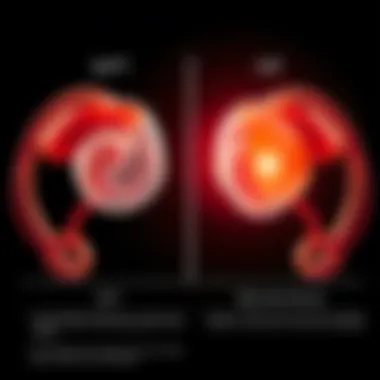

- Intracytoplasmic Sperm Injection (ICSI): This technically specialized approach enables sperm to penetrate the egg directly by injecting a single sperm into the cytoplasm of the egg. It’s especially beneficial for cases with male factor infertility.
- Natural Cycle IVF: This technique seeks to retrieve eggs from a woman’s body during a natural menstrual cycle, bypassing the need for hormonal stimulation.
- Egg Donation: Utilizing donor eggs can be a boon for women who produce eggs of suboptimal quality due to age or other factors.
The decision-making process surrounding these alternatives involves factors such as medical history, emotional readiness, and financial considerations. It is imperative that patients are informed about all possible options, aligning their choices with their unique situations and preferences.
Innovations in Assisted Reproductive Technology
The realm of assisted reproductive technologies is characterized by continuous innovation and improvement. A few pivotal developments influence how treatments like GIFT and its alternatives are performed today:
- Genetic Screening Techniques: Pre-implantation genetic testing (PGT) evaluates embryos for genetic disorders before implantation. This innovation minimizes the chances of transmitting genetic conditions and supports healthier pregnancies.
- Cryopreservation Advances: Enhanced freezing techniques, such as vitrification, have improved the success rates of frozen eggs and embryos, allowing for more flexible treatment scheduling and better preservation of reproductive options.
- Artificial Intelligence: The integration of AI into the reproductive medicine sector has led to significant advancements in embryo selection, ultrasound imaging for ovulation monitoring, and personalized treatment protocols. These intelligent systems analyze vast amounts of data to improve clinical outcomes and optimize patient care.
The trajectory of reproductive technology emphasizes a shift toward more personalized and effective solutions. As treatments evolve, they also pave the way for new ethical discussions regarding the implications of such advancements in reproductive health.
In summary, the advancements in reproductive technologies encapsulate a transformative period in the field of fertility. With innovations emerging on multiple fronts, patients now have a wider array of options and support, ensuring that this complex journey toward parenthood can be navigated with greater ease and success. Understanding these advancements is essential for patients, practitioners, and stakeholders, ensuring adept navigation of the complex world of fertility treatments.
Patient Testimonials and Case Studies
When considering Gamete Intrafallopian Transfer (GIFT), one aspect that can be profoundly illuminating is the real-life experiences of patients who have undergone the procedure. Testimonials and case studies offer invaluable insights that statistics alone cannot provide. They portray the emotional journey of individuals and couples navigating fertility challenges, as well as how GIFT has impacted their lives.
These personal narratives serve multiple purposes. Firstly, they give a face to the abstract processes involved in reproductive technology. A couple's account of their experience with GIFT can demystify the clinical nature of the procedure. They highlight the anticipation and anxiety that often accompany fertility treatments, and how GIFT differs in its approach compared to alternatives like IVF.
Moreover, testimonials foster a sense of community among those struggling with infertility. Knowing that others have traversed similar paths creates fellowship and offers hope. For many, hearing success stories and following the journeys of others who’ve been in the same boat can often influence their decision-making process as they weigh their options.
Real-Life Experiences
Real-life experiences of patients undergoing GIFT reveal both the profound hopes and sometimes the outcomes that vary between individuals. For instance, a patient named Sara shared her journey of trying to conceive after multiple unsuccessful IVF attempts. She felt despondent but was open to exploring GIFT. "When I heard that my eggs and my husband’s sperm would be introduced directly into my fallopian tubes, it felt like a more natural approach to conception," Sara remarked. This expression reflects a common sentiment that resonates with many patients looking for alternatives in assisted reproductive technologies.
Such testimonials often detail the day of the procedure — the emotions, the medical staff's approach, and even the recuperation period. Patients describe a mix of nervousness and excitement, as it can feel like a turning point in their fertility journey. These narratives also provide insights into what patients found helpful in preparing mentally and physically for GIFT, such as open communication with healthcare providers and support from family.
Analysis of Case Outcomes
Analysing case outcomes from GIFT highlights the diverse nature of patient experiences and success rates. While one patient may celebrate a successful pregnancy, another may recount a more complicated journey with mixed results. An example can be drawn from a clinic's records where they tracked several cases over a year. Among 30 patients who underwent GIFT, about 10 were successful in achieving pregnancy, amounting to a roughly 33% success rate. In contrast, four patients experienced ectopic pregnancies—an unfortunate but critical outcome that must be addressed in any discussion surrounding GIFT.
While these numbers give a snapshot of success, the underlying stories often reveal nuances that statistics simple gloss over. Factors like age, underlying health conditions, and emotional support systems all play pivotal roles in patients' journeys. As Dr. Perkins, a fertility specialist, notes, "Every patient's body reacts differently; understanding their unique circumstances is crucial in evaluating outcomes and expectations."
"Hearing stories from others who have been through the process gave me the push I needed to try GIFT; it changed my perspective entirely." - a prospective patient
For more information related to fertility treatments and patient experiences, you might explore resources like NHS.co.uk, FertilityNetworkUK.org, and Resolve.org. Room for additional stories and outcomes can also be found on dedicated forums and communities, like reddit.com/r/Fertility.
Future Perspectives on GIFT
As we navigate the evolving landscape of reproductive science, the future of Gamete Intrafallopian Transfer (GIFT) remains an area of high interest and scrutiny. Recognizing the method's distinct benefits and its niche role in fertility treatments is vital for practitioners and patients alike. As strategies and technologies progress, GIFT may transform further, shaping the way many seek to build families.
Trends in Fertility Treatments
In recent years, the field of fertility treatments has witnessed significant innovations and shifts. Today, patients are more informed than ever about their options. Some notable trends include:
- Personalization of Treatment: There is a growing emphasis on tailored approaches to fertility, taking into account individual medical histories, genetic backgrounds, and lifestyle factors. GIFT, known for its unique method of facilitating conception in a more natural setting, fits into this personalized framework.
- Holistic Approaches: New strategies are focusing not just on the biological aspects of fertility but also on emotional and psychological factors. Integrating counseling and holistic health practices into GIFT protocols could enhance overall patient well-being.
- Increased Awareness of Fertility Preservation: More individuals are considering fertility preservation options, especially in light of career and lifestyle choices. GIFT can be an effective choice for women who want to optimize their chances of natural conception later in life.
By paying attention to these trends, GIFT has the potential to adapt and remain relevant as evolving therapies develop.
The Role of Technology in Fertility Medicine
Technology continually shapes the practice of medicine, and reproductive health is no exception. Major advancements impact how GIFT is performed and its integration with other fertility solutions:
- Improved Imaging Techniques: The use of advanced imaging allows for better visualization of the reproductive tract, leading to precise gamete placement during GIFT. Enhanced imaging can provide data that help guide physicians during the procedure, increasing the likelihood of success.
- Genetic Testing: With the advent of pre-implantation genetic testing (PGT), couples undergoing fertility treatments can better assess their options. While GIFT primarily involves the transfer of eggs and sperm, genetic testing could help select viable gametes, making the procedure itself more effective.
- Telemedicine: The rise of telehealth has made it easier for patients to consult experts regardless of geographical constraints, improving access to GIFT and other fertility treatments. This could increase the number of couples able to consider GIFT as a viable option.
The ongoing evolution of reproductive technologies reflects not just scientific advancement but also a deeper understanding of human fertility and desired family dynamics.
Further exploration of these themes will be crucial as GIFT and its alternatives continue to develop. For more information about the advances in fertility treatments, consider checking resources like ClinicalTrials.gov and the American Society for Reproductive Medicine.
Epilogue
In wrapping up our discussion on Gamete Intrafallopian Transfer (GIFT), it's evident that this technique stands as a testament to the intricacies of reproductive science and addresses growing fertility concerns. GIFT is not merely a procedure but a carefully tuned approach advocating for the natural pathways of conception, thus holding significant appeal for many couples. The focus here is on the direct interaction of gametes within the fallopian tubes, promoting fertilization in an environment much akin to natural conception.
Summary of Key Findings
Throughout this article, several key points have emerged regarding GIFT:
- Natural Fertilization Environment: The transfer of sperm and eggs occurs directly within the fallopian tubes, enhancing the likelihood of natural fertilization.
- Clinical Relevance: With its specific focus on suitable candidates, GIFT caters to those unable to conceive through standard methods. It highlights the need for personalized fertility treatments that respond to individual conditions.
- Comparative Advantages: In contrast to in vitro fertilization, GIFT tends to preserve the natural fertilization process which some studies suggest might increase the chances of embryo quality and subsequently, the likelihood of pregnancy.
- Ethical Considerations: As fertility technology advances, ethical discussions surrounding informed consent and genetic implications become ever more pertinent, making understanding these factors critical for future practitioners and patients alike.
These findings endorse the significance of recognizing a patient's unique circumstances and preferences in the context of fertility treatments.
The Evolution of GIFT in Reproductive Health
The evolution of GIFT reflects a broader narrative in reproductive health that has continuously adapted to scientific progress and ethical reflections. Initially introduced in the late 1980s, GIFT was a pioneer in in vivo fertilization methods, thriving alongside a period of groundbreaking research in reproductive biology. Over time, advancements in ultrasound technology and minimally invasive surgical techniques have improved both the safety profiles and the effectiveness of the procedure.
Among the factors shaping GIFT's development:
- Technological Innovations: The rise of laparoscopy has made the procedure less invasive, thus lowering potential complications for patients.
- Targeted Treatments: The method continues to evolve in response to investigations into patient-specific issues, such as issues with egg quality or sperm mobility, tailoring GIFT treatments more effectively.
- Regulatory and Ethical Framework: The ever-changing landscape around fertility regulations and moral discussions emphasize the importance of informed consent and patient autonomy during GIFT.
In summary, the trajectory of GIFT in reproductive health showcases how medical practices can pivot toward improved outcomes as technological and ethical paradigms shift. GIFT embodies a fusion of science, compassion, and individualization, making it an integral part of contemporary fertility treatments.







